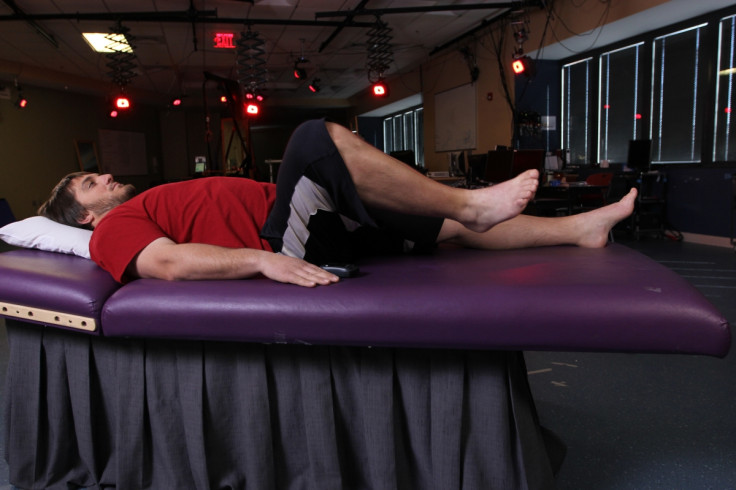Paralysis Breakthrough: Will Electric Pulse to Spine Restore Ability to Walk Again?

Scientists have succeeded in helping four young men who have been paralysed for years to move their legs again, thanks to a groundbreaking method of using electricity to stimulate spinal cords.
Scientists at the University of Louisville, UCLA and the Pavlov Institute of Physiology helped the study's first participant Rob Summers regain a number of motor functions in his lower limbs in 2011.
Their study, "Altering spinal cord excitability enables voluntary movements after chronic complete paralysis in humans", just published in the journal Brain, shows that their therapy has worked on three other patients too.
All four participants, who were paralysed in road-related accidents, were given "epidural stimulation" - an electrical current of varying frequencies and intensities applied to specific locations on the patients' lumbosacral spinal cord. The area contains dense neural bundles that largely control the movement of the hips, knees, ankles and toes.
No chance of recovery
"Two of the four subjects were diagnosed as [completely] motor and sensory-injured with no chance of recovery at all," said lead author Claudia Angeli, a senior researcher with the Human Locomotor Research Center at Frazier Rehab Institute and an assistant professor at University of Louisville's Kentucky Spinal Cord Injury Research Center (KSCIRC).
"Because of epidural stimulation, they can now voluntarily move their hips, ankles and toes. This is groundbreaking for the entire field and offers a new outlook that the spinal cord, even after a severe injury, has great potential for functional recovery."
Kent Stephenson, who was paralysed at the age of 21 in a 2009 motocross racing crash, said: "My mum, who was in the room when they turned the stimulator on and told me, 'Pull your left leg up,' cried when I did it.
"I got a little watery-eyed, too. I'd been told I'd never move voluntarily again.
"[After months of rehab], I can pick up both my legs without the stimulator on, and can also stand without it. My record is 27 minutes, and I'm still progressing."
Wake-up call
Once the signal was triggered by the electrical current, the spinal cord re-engaged its neural network to control and direct muscle movements, and when put together with rehabilitative therapy, the patients were able to activate movements over time with less and less stimulation.
"We have uncovered a fundamentally new intervention strategy that can dramatically affect recovery of voluntary movement in individuals with complete paralysis, even years after injury," said Susan Harkema, a University of Louisville professor and rehabilitation research director at KSCIRC, Frazier Rehab Institute, and director of the Reeve Foundation's NeuroRecovery Network.
"The belief that no recovery is possible and complete paralysis is permanent has been challenged."
According to the researchers, the results of their study is a "wake-up call" to doctors who treat spinal cord injuries.
"We don't have to necessarily rely on regrowth of nerves in order to regain function," said Reggie Edgerton, who has been conducting research in the area for 38 years and is a member of the Reeve Foundation's International Research Consortium on Spinal Cord Injury.
"The fact that we've observed this in four out of four people suggests that this is actually a common phenomenon in those diagnosed with complete paralysis."
The study shows strong evidence that patients who have complete spinal cord injuries could be able to bear weight on their own, maintain balance and work towards walking again.
© Copyright IBTimes 2025. All rights reserved.




















